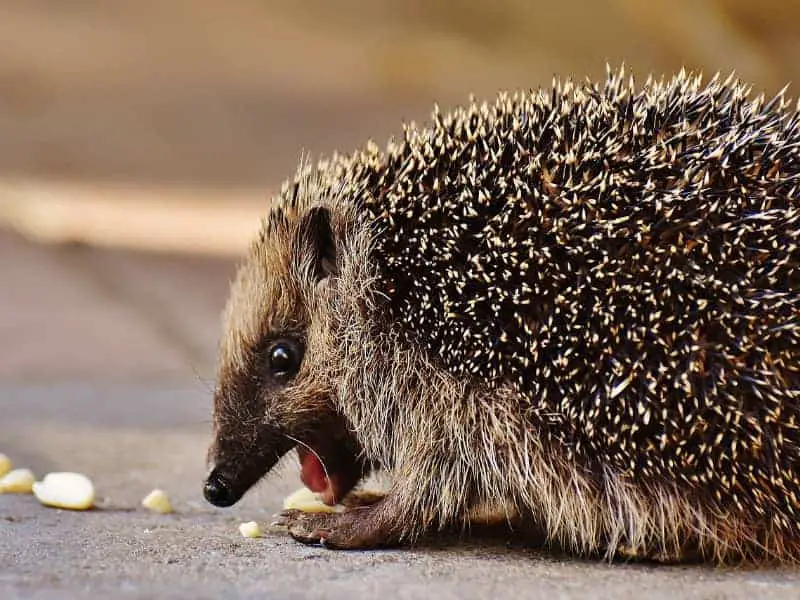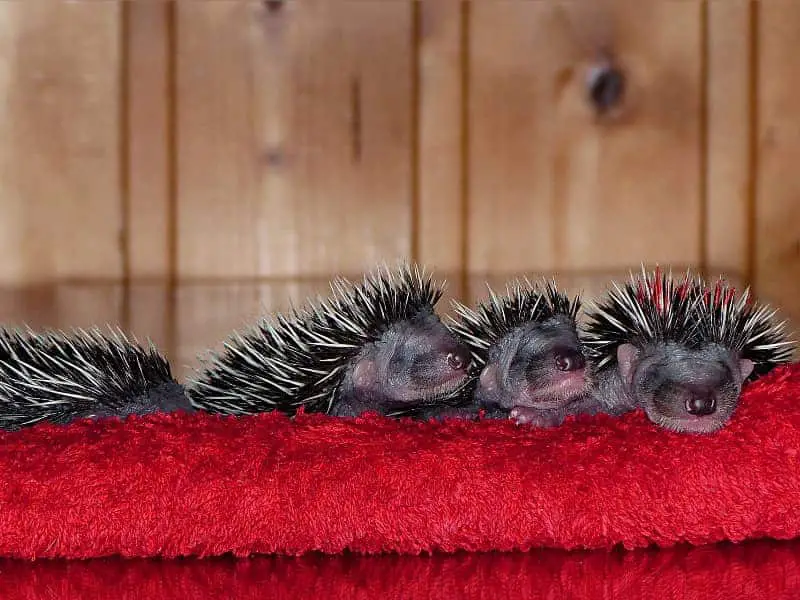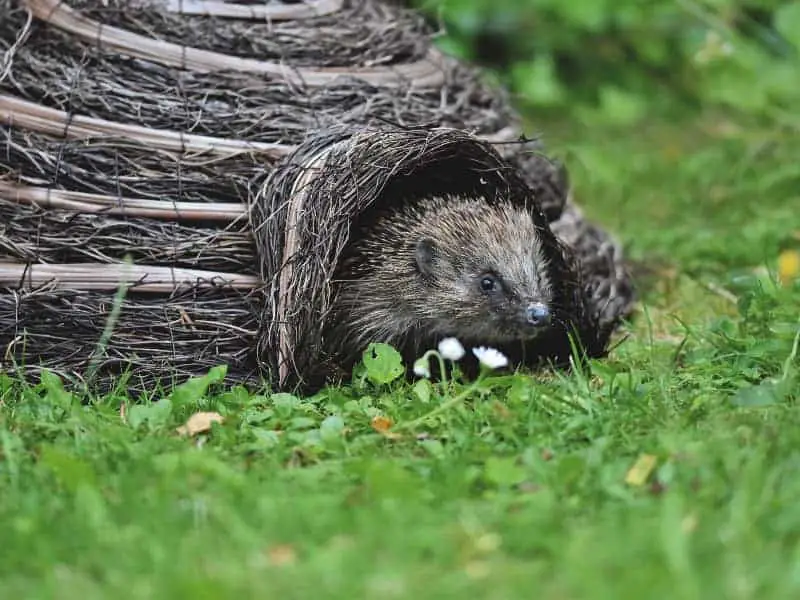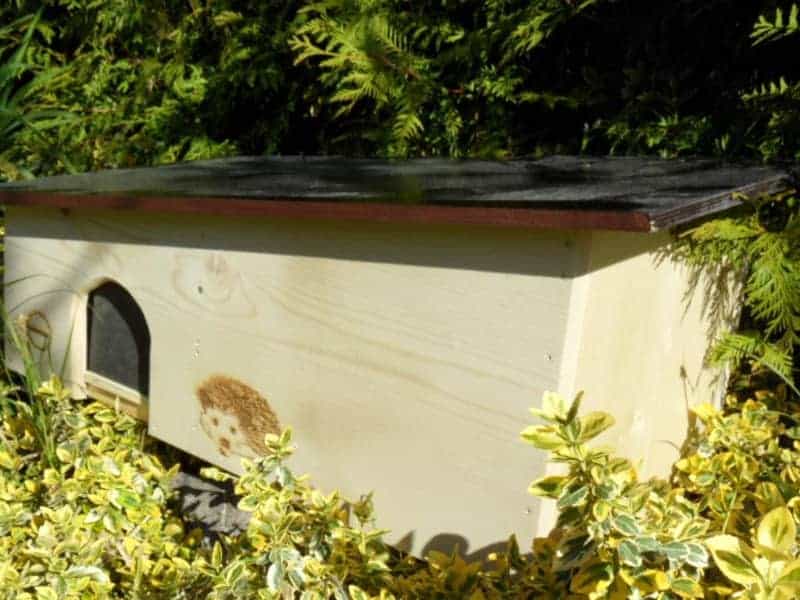
Hedgehog dies signs
In this blog post, we're going to take an in-depth look at a serious and sensitive topic: the signs that indicate a hedgehog is dying. If you have a hedgehog in your garden or near your home, it is crucial to recognize the signs that could indicate that the little animal is not well. The main goal of this post is to educate you on the various signs and symptoms that a dying or sick hedgehog will exhibit and how best to act.
- Hedgehog dies signs
- Why is the topic "hedgehog dies signs" important?
- Hedgehog biology
- Nutrition and health
- Behavior of a healthy hedgehog
- How to recognize a sick hedgehog
- Hedgehog dies signs - the process of dying in a hedgehog
- Common causes of death of hedgehogs
- First aid for sick or dying hedgehogs
- How to help hedgehogs
- Hedgehog dies signs detected, think hedgehog rescue
- Conclusion: hedgehog dies signs
Why is the topic "hedgehog dies signs" important?
This topic is so important because hedgehog numbers are declining in many countries, including Germany. Environmental conditions, human factors and disease have a significant impact on hedgehog populations. By recognizing the signs that a hedgehog is dying, we can act promptly and possibly even save its life or at least minimize its suffering.
What are the signs of a dying hedgehog?
A dying hedgehog usually shows a number of symptoms that distinguish it from a healthy hedgehog. These include behavioral changes, abnormalities in posture or movement, skin and fur problems, and other health abnormalities. However, it is important to look at these signs in context and not jump to conclusions. A single symptom is not necessarily a sign of a dying hedgehog, but may be an alarm signal that warrants further investigation.
Aim of the blogpost: Hedgehog dies signs
The main focus of this blog post is to explain in detail the various signs and symptoms that can occur in a dying hedgehog. We will also look at the possible causes and discuss what can be done to help the animal at this critical stage. This knowledge should help you better understand a hedgehog in distress and provide effective help.
Hedgehog biology
Before we address the sad and complex signs that may indicate that a hedgehog is dying, it is useful to develop a basic understanding of the biology of these fascinating animals. Only then can we properly classify the changes in a hedgehog's behavior and condition and act accordingly.
Lifetime
A hedgehog living in the wild usually lives between four and seven years, although this depends greatly on various factors such as diet, habitat and state of health. In captivity, hedgehogs can even live up to ten years. An older hedgehog is more susceptible to disease and mortality rates increase with age, so recognizing the signs of dying at this stage of life is especially important.
Susceptibility to disease
Hedgehogs, like all wild animals, are susceptible to a number of diseases. Parasite infestations, respiratory diseases and skin diseases are just a few examples. As they are often near human settlements, they are also exposed to hazards from toxins or road traffic. It is therefore not uncommon for hedgehogs to show signs of disease at a young age which, if left untreated, can lead to death.
Reproduction and life cycle
The life cycle of a hedgehog is closely linked to its reproductive cycle. The mating season is usually between April and August, with young born about four weeks after mating. A good knowledge of a hedgehog's reproductive cycle and age can help us better interpret its behavior and detect signs of disease or death early.
This section on biology should serve as a basis for you to better understand the following information on the dying process and signs.
Nutrition and health
Nutrition plays a crucial role in a hedgehog's health and is often a telling indicator of its overall condition. A healthy hedgehog is a well-fed hedgehog, but unfortunately the lack of certain nutrients or poor nutrition can have serious consequences and even be a sign that the hedgehog is dying.
Typical food
Hedgehogs are generally omnivorous, with their diet consisting mainly of insects, spiders, worms and snails. Some hedgehogs may also eat plant foods such as berries and fruits. A balanced diet is vital for a hedgehog and ensures that it receives all the nutrients it needs. Lack of nutrition or consumption of inappropriate foods can lead to serious health problems.
Deficiency symptoms
A hedgehog that does not receive the necessary nutrients will show signs of deficiency. This can lead to weight loss, weakness, apathy, and increased susceptibility to disease. Deficiency symptoms are often an early sign that something is wrong with the hedgehog and, if left untreated, can lead to its death.
Relationship between diet and health
There is a direct correlation between a hedgehog's diet and its state of health. A well-fed hedgehog has a strong immune system, is more active, and has a shiny coat, which is generally considered a sign of health. In contrast, poor nutrition can lead to a variety of health problems, including signs that indicate the hedgehog may be dying.
By understanding a hedgehog's dietary habits and associated health issues, we are better prepared to recognize the signs that may indicate that the hedgehog is dying.
Behavior of a healthy hedgehog
To better recognize the signs that a hedgehog is dying, it is useful to first understand the behavior of a healthy hedgehog. A healthy hedgehog exhibits certain characteristic behavior patterns that indicate its activity, social behavior, and feeding behavior. These characteristics serve as a basis of comparison to identify changes and abnormalities that may indicate health problems.
Activity Patterns
A healthy hedgehog is primarily active at dusk and at night, as it is a nocturnal animal. He moves with a purposeful gait, often sniffs the ground and is in search of food. During the cold season, usually from November to March, the hedgehog hibernates. If you see a hedgehog active during the day or during the winter months, it may be an alarm signal.
Social behavior
Hedgehogs are usually solitary and prefer to be alone except during mating season. A healthy hedgehog will defend its territory and raise its spines when threatened. He will not usually be aggressive or overly fearful unless he feels threatened. Noticeable changes in social behavior may indicate stress, illness, or other health problems.
Nutritional Behavior
As mentioned earlier, hedgehogs are omnivores with a preference for insects and other small animals. A healthy hedgehog will actively search for food and eat with appetite. He will also drink fresh water if it is available. A lack of interest in food or water is often an early warning sign of health problems and should not be ignored.
Knowing the behavior of a healthy hedgehog helps us recognize the early warning signs that might indicate a hedgehog is sick or dying. Understanding these basics is critical to being able to help effectively.
How to recognize a sick hedgehog
Being able to recognize a sick hedgehog early can be critical to getting them the help they need and potentially saving their life. Although some symptoms may be obvious, there are also more subtle signs that can be easily missed. In this section, we will cover the noticeable symptoms, common illnesses, and recommended next steps.
Noticeable symptoms
When a hedgehog is sick or dying, there are several noticeable symptoms you should look for. These include lethargy, loss of appetite, unusual behavior such as daytime activity or avoidance of hiding. Physical signs may include mucus from the mouth or nose, limping movements, or obvious injuries. Another alarm signal is a noticeably decreased body weight.
Common diseases
Some of the most common diseases in hedgehogs are parasite infestations (fleas, ticks, worms), respiratory infections, skin problems, and nutritional deficiencies. Each of these diseases shows specific symptoms, but they can all have serious consequences if not treated. It is important to recognize such signs early to allow the best chance of recovery.
What to do?
If you notice signs that a hedgehog is sick or dying, quick action is needed. First, you should try to carefully move the hedgehog to a safe environment, such as a cardboard box with holes for ventilation. Try to offer him water and hedgehog-friendly food. The next step is to contact a veterinarian or a hedgehog rescue center. They can make a professional diagnosis and recommend appropriate treatment.
Early recognition of a sick hedgehog is critical to getting it the medical care it needs. It is important to pay attention to the above symptoms and signs, and if in doubt, seek professional help. By doing so, we can significantly increase the hedgehog's chances of survival.
Hedgehog dies signs - the process of dying in a hedgehog
The dying process in hedgehogs is a complex issue that involves both biological and behavioral aspects. It is a natural part of the life cycle, but the signs that a hedgehog is dying are often difficult to interpret. This section provides an overview of the biological processes, dying behavior, and accompanying symptoms that may occur when a hedgehog is nearing the end of its life.
Biological processes
Biologically, a dying hedgehog will undergo a number of changes. These include a lowering of metabolism, decreased blood flow, and a gradual loss of body functions. In many cases, decreased feeding activity or even complete refusal to eat is also observed. Some hedgehogs may also have diarrhea or other digestive problems that further limit their ability to eat.
Dying behavior
Behaviorally, dying hedgehogs are often less active and may appear apathetic. They may seek a secluded, quiet place to retreat. Movements become slower and less coordinated. In extreme cases, they may even fall into a kind of lethargy in which they barely respond to external stimuli. A hedgehog's dying behavior may also be instinctive, as the animal tries to hide from possible predators that might take advantage of its weakness.
Accompanying symptoms
Associated symptoms that may occur when a hedgehog dies include difficulty breathing, convulsions or tremors, and loss of control over bodily excretions. In some cases, significant changes in fur or skin color may also be observed. These symptoms can occur in various combinations and degrees of severity and should be considered a serious sign of the end of the animal's life cycle.
The dying process in hedgehogs is a complicated and often difficult to interpret phenomenon. However, it is important to know the symptoms and signs that indicate that a hedgehog is nearing the end of its life. Only then can the necessary steps be taken to provide the animal with as much comfort as possible or to seek medical help if necessary.
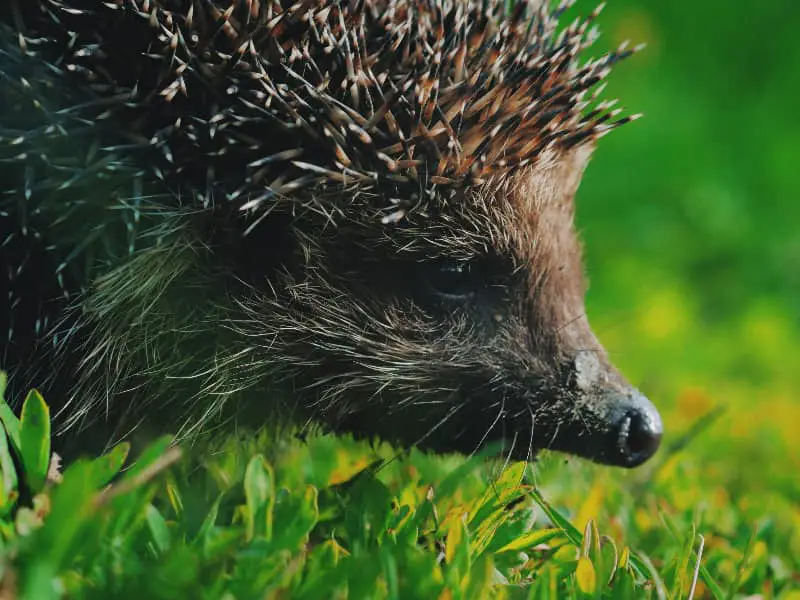
Common causes of death of hedgehogs
Hedgehog deaths are often the result of a combination of factors. Although the natural life cycle naturally plays a role, there are many other causes that can hasten the death of a hedgehog. In this section we will cover the most common causes such as disease, malnutrition and adverse environmental conditions.
Diseases
Disease is one of the most common causes of hedgehog deaths. This can range from infectious diseases such as respiratory illnesses, to parasite infestations such as fleas and ticks. A weakened immune system can make the animal more susceptible to such diseases, especially if it is already burdened by other factors such as poor nutrition or stress. Early detection and appropriate treatment are therefore crucial.
Malnutrition
Malnutrition is another critical factor that can affect hedgehog mortality. A lack of essential nutrients or an unbalanced diet can lead to a variety of health problems. These include weakness, decreased resistance to disease, and ultimately a shortened life. Malnutrition can also be the result of human intervention, such as offering unsuitable food like milk that is harmful to hedgehogs.
Environmental conditions
Poor environmental conditions can also contribute to hedgehog mortality. Factors such as pollution, pesticides, and loss of natural habitats can cause significant stress. In addition, extreme weather conditions such as prolonged drought or cold spells can affect the animals' ability to survive. In such cases, hedgehogs often cannot find enough food and shelter, which significantly reduces their chances of surviving the winter.
First aid for sick or dying hedgehogs
If you come across a sick or dying hedgehog, quick and informed action is required. Although emotions may run high, it is important to keep a cool head and take sensible action. In this section you will learn what you can do, what you should avoid, and when professional help is needed.
What can you do?
The first step is to gently pick up the hedgehog with gloves and move it to a safe, warm environment. A cardboard box with newspaper and some straw is suitable as a temporary shelter. Once the hedgehog is safe, you should assess its condition more closely. Are there any obvious injuries? Is the animal showing symptoms of illness or weakness? A vial of warm water can help the animal maintain its body temperature, but be careful not to overheat it.
What should be avoided?
There are also things that should be avoided at all costs. These include giving the hedgehog milk, as it contains lactose, which hedgehogs cannot digest and leads to diarrhea. Likewise, you should not touch the hedgehog with your bare hands to prevent the transmission of disease. It is also important not to use home remedies or medications without professional advice.
Seek professional help
If the hedgehog has obvious symptoms or injuries, it is advisable to seek professional help as soon as possible. Veterinarians or specialized wildlife rescue centers are the best places to go for treatment of sick or dying hedgehogs. They can make an accurate diagnosis and initiate appropriate treatment beyond the scope of first aid.
How to help hedgehogs
Supporting hedgehogs is a multi-front war that involves not only direct first aid for sick or injured animals, but also proactive measures to improve their living conditions. This section focuses on three main areas where you can take action: habitat design, feeding, and protection from natural enemies.
Habitat design
The first step to helping hedgehogs is to create a hedgehog-friendly habitat. A garden with a variety of shrubs, hedges and piles of leaves provides ideal hiding places and nesting opportunities. In addition, the garden should be free of toxins such as pesticides or slug pellets, which can be harmful to hedgehogs. Make sure there is also access to fresh water, especially during dry periods.
Feeding
While hedgehogs eat a variety of insects, worms and other small animals in the wild, supplemental feeding can be very helpful, especially during times of food shortage. However, it is important to offer the right type of food. Wet cat food or special hedgehog food are good options. As mentioned earlier, milk should be avoided as hedgehogs do not tolerate it.
Protection from enemies
Hedgehogs' natural enemies are primarily larger predators like foxes, but man-made hazards like road traffic and garden tools can also pose a threat. To offer hedgehogs better protection, you can make obstacles such as fences or walls hedgehog-friendly by creating small passages. Refraining from gardening at night or driving in the dark can also help prevent accidents.
With these proactive measures you can make a big contribution to the protection and well-being of hedgehogs in your area. Every little action counts and improves the chances of survival of these fascinating animals.
Hedgehog dies signs detected, think hedgehog rescue
When it comes to the protection and care of hedgehogs, hedgehog rescue centers play an important role. These facilities are often the last resort for sick, injured or orphaned animals. In this section you will learn more about the work of these centers, how you can help and some testimonials and examples.
What do they do?
Hedgehog rescue centers primarily aim to help hedgehogs in distress. This includes medical care, rehabilitation, and if possible, reintroduction. Experts at these centers are specially trained to understand the animals' needs and can perform complex treatments such as surgery or administering medications. In addition, many of these centers offer educational materials and courses to raise public awareness of the hedgehogs' needs.
How to help?
There are many ways you can support hedgehog rescue centers. Financial donations are of course always welcome and urgently needed for medical care, food and shelter. But also donations in kind like blankets, food or medical material are helpful. Volunteering is another option, whether it's providing hands-on assistance on site or raising awareness in the community.
Experiences and examples
Many people who are involved in hedgehog rescue centers or have used their services report consistently positive experiences. For example, there are numerous success stories of hedgehogs that have been released back into the wild after serious injury or illness. These stories serve not only as inspiration, but also as an important learning resource for continuous improvement of care practices.
The work of hedgehog rescue centers is invaluable in saving and protecting these unique animals. By understanding their function and how we can help, we can all contribute to improving the living conditions for hedgehogs.
Here you can find a list of hedgehog rescue stations: hedgehog.house. If none of these stations is near you, you can also contact your regional NABU association and get more information there.
Conclusion: hedgehog dies signs
Hedgehog conservation and care are complex tasks that require a wide range of knowledge and commitment. Whether it's recognizing the signs of a dying hedgehog or taking proactive steps to improve their living conditions, every action counts.
Summary of the main points
We have looked at the many aspects of hedgehog health, from diet and behavior to signs of disease and dying processes. Likewise, we have highlighted the important role of hedgehog sanctuaries and individual options for action.
Final thoughts
Hedgehogs are an integral part of our natural environment, but they are also extremely vulnerable to the negative effects of human activities and environmental changes. Our responsibility goes beyond simple first aid measures and includes actively creating a hedgehog-friendly environment and supporting professional rescue services.
Recommendations for action
As final recommendations for action, always keep a watchful eye on the hedgehog population in your area and act quickly if there are signs of illness or death. Equally important is proactive habitat management and support for hedgehog sanctuaries, whether through donations, volunteering or education.
Author

-
Garden animal - A life with nature
Welcome to my animal blog! My name is Dirk and I am happy to take you on my journey through the fascinating world of animals and gardening.
Born 54 years ago, I have had an insatiable curiosity for the animal world around me since childhood. Although I have moved professionally in other industries, my true passion has always been animals and nature. It is remarkable how a small garden has become such an important part of my life.
Many of my fondest memories are associated with the animals that share our home. Whether it's the curious squirrels that scurry across the trees in the morning, the colorful variety of birds that visit our feeders, or the busy bees and butterflies that pollinate our flowers, every moment with them is invaluable to me.
This blog is my contribution to share my experiences, discoveries and insights with like-minded people. Here I will share stories of unforgettable encounters with animals, give tips on gardening and creating wildlife-friendly habitats, and take you on my journeys through nature.
Thank you so much for being here!
Cordial,
Dirk aka garden animal
Last posts
- 27. February 2024PetsVeganes Hundefutter – Grün und Gesund?
- 18. January 2024ChickensOregano für Hühner
- November 27, 2023HamsterDiurnal hamsters
- November 24, 2023HamsterHamster hammock

